Insights on COVID-19 from the Valley Vision Board of Directors
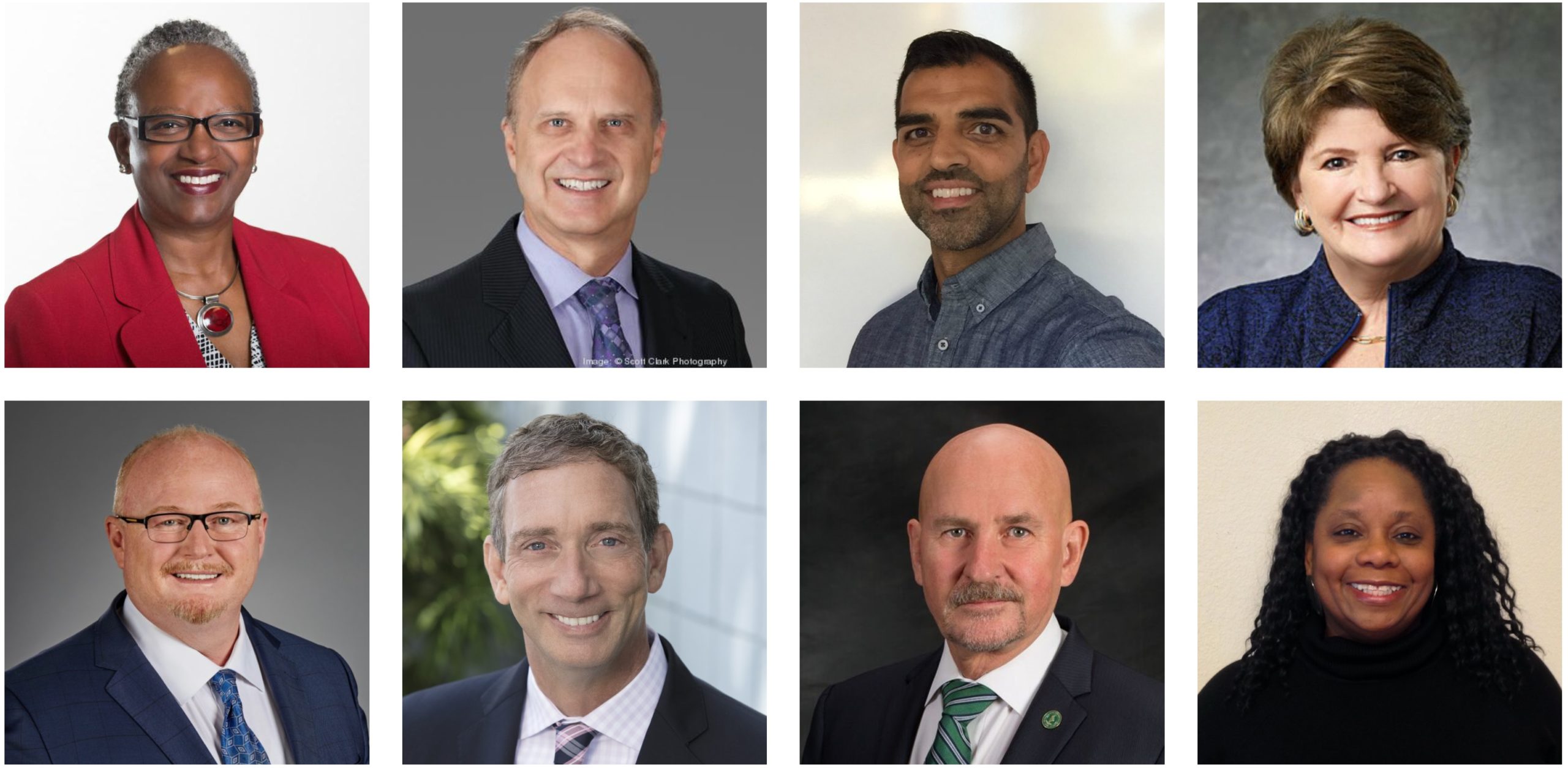
Life in the Capital Region has, like everywhere else, been fundamentally altered by the COVID-19 pandemic. In the midst of our work to address the challenges of today, we are all also trying to anticipate what our economy, our communities, and our overall wellbeing will look like when the crisis point passes and we shift toward recovery.
But data-driven answers to those important questions are hard to find right now, because this is all both so recent and swiftly-developing, and also so encompassing of, frankly, everything. So in place of data, we turned this week to sources of deep experience – members of Valley Vision’s Board of Directors. Their insight and expertise helps us grapple with the perplexity and uncertainty before us.
We hope you’ll find it a useful and informative step along the road to creating, together, answers to what have become our region’s most critical questions.
-Meg Arnold, Interim CEO
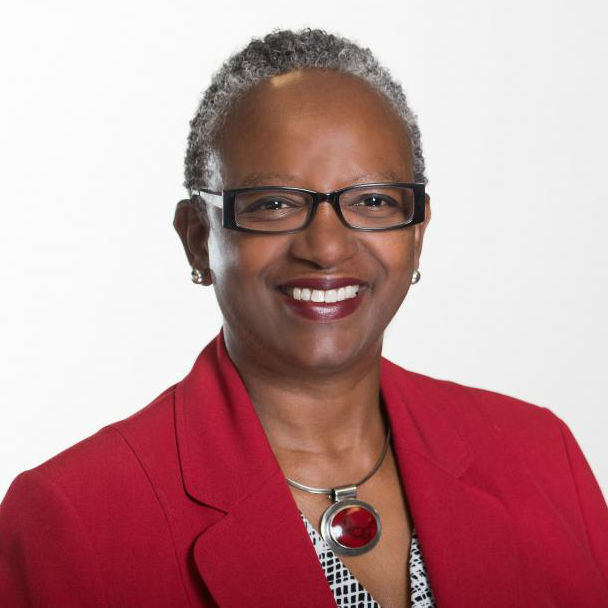
Stephanie Bray
United Way California Capital Region
Question: How do you see COVID-19 impacting vulnerable communities? In what ways is the region stepping up to meet their needs? What are the ways we could improve?
We are seeing huge impacts on our communities’ most vulnerable populations, with both our food system and economy under tremendous stress. School closures have further revealed food access barriers and challenges as many students rely on school meals. Additionally, many families are struggling to pay their bills, purchase medications, and meet their basic needs.
The California Capital Region United Way is stepping up in multiple ways, including working with our nonprofit partners to deploy direct assistance to families and partnering in the local Donate4Sacramento campaign along with our own relief fund to provide childcare, meals, rental assistance and other essential resources for families whose lives have been disrupted by the COVID-19 outbreak. This fund provides a direct payment of $500 for families to utilize however needed with opportunities to connect to peers experiencing similar struggles on a national online platform called UpTogether, a program developed by the Family Independence Initiative based in Oakland, CA.
As the community responds quickly to the crisis, we are seeing nonprofits band together and funders stepping up to meet our community’s needs. Although food access barriers have been issues for our community for some time, this crisis has demonstrated our ability to act and effect change that should empower and encourage us to address long standing systemic issues after this pandemic ends.
As discussed with Yzabelle Dela Cruz, Project Associate
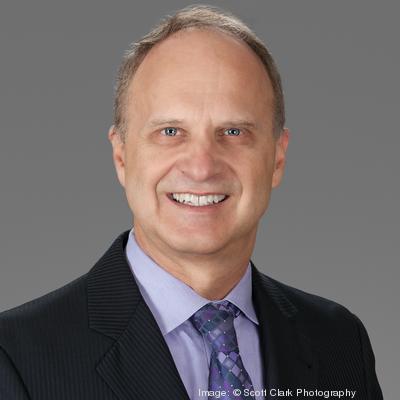
Dave Cheney
Sutter Medical Center, Sacramento
Question: How do you think health systems might evolve as a result of COVID-19? What are the opportunities? What are the challenges?
The broad answer is that no one really knows yet, because the COVID-19 pandemic is not even close to being over.
However, as things are evolving, there are certain indicators that we see now that will probably change for the better that we will not revert back to as we did before coronavirus. The biggest is the use of Telehealth. Healthcare professionals have been trying to promote telehealth in the United States for years, but we have been met with minimal buy-in from the government on account of payers and commercial payer’s coverage.; the argument for telehealth hasn’t really held. Since COVID-19, we have seen greater receptiveness to telehealth through reimbursement policies, and the practices or use of telehealth – especially in our rural areas, and for our patients practicing social distancing where they either prefer not to, or simply cannot physically visit their doctor’s office to seek care. With the advent of the COVID-19 we have been able to create a robust telehealth program. So I don’t think when COVID-19 is over, we will revert back to where we were pre-telehealth. I don’t see that happening. The value is clearly present. Patients love it, physicians love it, healthcare providers in general absolutely love it.
An additional opportunity that we have learned from COVID-19 is assessing how we plan for large scale epidemics. We need to assess how we stock and store personal protective equipment (PPE), and how we secure medical equipment, such as ventilators. We are learning a wealth of knowledge and best practices occurring globally, but when the appropriate time presents itself, we will have an opportunity to revisit our big picture planning, and learn from our efforts of what it is that we can do to improve at the local, county, state, and federal level so as to better prepare for the next crisis. To that point, the access to available PPE has been our greatest challenge. We are anticipating an influx of patients in the weeks to come, and we are trying to ensure that we have the equipment to protect our caregivers in the hospital; from our healthcare providers to everyone that supports healthcare providers. The advantage of an integrated network such as ours is that we can move the resources across our various locations to support the medical equipment and staffing resources from one location to another. We are constantly moving equipment and supplies around the system to make sure everyone at our hospitals have the tools and resources they need to take care of our patients.
I would like to express my deep gratitude to our caregivers, our doctors, our nurses, our housekeepers, our research teams, and everyone working together in this fight. You are our true heroes. Nothing is possible without the knowledge, compassion, and bravery you have all demonstrated over recent weeks. Thank God for them. As a community we thank you for putting your lives at risk for us, daily.
What can we do to support our hospitals in these times?
- Stay home
- Practice social distancing
- Wash your hands
- Take care of yourself physically, emotionally and spiritually
As discussed with Sonia Dueñas, Project Associate

George Claire
The Shop @ VSP Global
Question: You are known as a design thinker. How will design thinking be able to help us in the recovery?
I think we can all agree that on in the wake of C-19, the world will emerge different than it was before. The impact of this episode on our lives will be felt for a while, and businesses both small and large will most definitely be reevaluating many aspects of their operations and questioning how to proceed from here. But when you take a closer look at this, it’s happened before; maybe not this suddenly, but it has happened. Uber disrupted the taxi business, and Redbox and Netflix pushed Blockbuster out of the industry. Granted, C-19 has come on suddenly and has forced businesses to very quickly and unexpectedly reexamine themselves. But this is exactly where design thinking can help businesses reimagine and reinvent themselves.
As a Design Thinker, I often ask a hypothetical question during my sessions—whether the audience is a client I’m consulting for or they’re internal within my own organization—and that is, “If it all burned down, would you rebuild it the same way?” But it’s no longer hypothetical; it’s real, and most everyone within every organization is strategizing and wondering how they’re going to get back on their feet. Where do we go from here and how? Design thinking, when paired with other business tools, offers a methodology that helps one understand what their real challenge is and why—so they’re focused on the right problem, not what they believe the problem to be—and how to go about addressing that challenge while making sure they’re utilizing and allocating their resources in the most effective way.
Design thinking is about meeting needs—real, inherent needs—and enhancing experiences. And the first step to getting there is asking one of the most important and powerful questions anyone can ask: “Why?”. Asking why all along is vital so that one not only learns and reaches an understanding of what’s at the root cause of the stated need but also the context and importance of why that root cause exists. Equally as significant as asking why, however, is to listen to the end user’s responses from a place of empathy. Understanding the problem and need from the end user’s perspective is absolutely necessary; this is ultimately who you are designing for, and they should be at the center of your design universe.
If, as a business, you’re providing a service or producing a product and you have failed to understand or address your customer’s real challenge, you’ll probably find yourself designing a solution which is now in search of a problem. And that can be costly. If you’re lucky, you will not have spent too many resources before you figure this out. But I think we can all admit that we’ve been a part of a project or some initiative that kicks off with a solution in mind rather than beginning with research to discover the real challenge. Other factors leading to poorly designed solutions include failing to place the end-user at the center of our design universe, not really listening to their needs, and being so in love with the solution (idea) we came up with that we do everything we can to try and force it to succeed.
The design thinking methodology provides a means for us to keep ourselves really honest and, as a result, makes sure we apply our resources (people, time, money) to solving the right challenges. And if not, design thinking ensures that we learn this early enough that it can be addressed. But design thinking is a culture shift, and that’s one of the hardest things—if not the hardest thing—to change within an organization. In its simplest form, design thinking is build, measure, learn. Then you iterate, pivot, and repeat. And you do so with the end user engaged with your project from beginning to end. If you do this, then yes, design thinking can certainly help us recover on the other side of C-19. But are people willing to embrace and trust the methodology? I can’t think of a single person the C-19 event hasn’t impacted to some extent, so my hope is that many will take a closer look at this opportunity—because that’s what it is—and ask themselves, “Now that C-19’s over, do I rebuild the same way?”. This is where design thinking can help you to reinvent and redesign your business—to use this as a turning point and come out of this pandemic stronger than you went in.
As discussed with Grace Kaufman, Project Manager
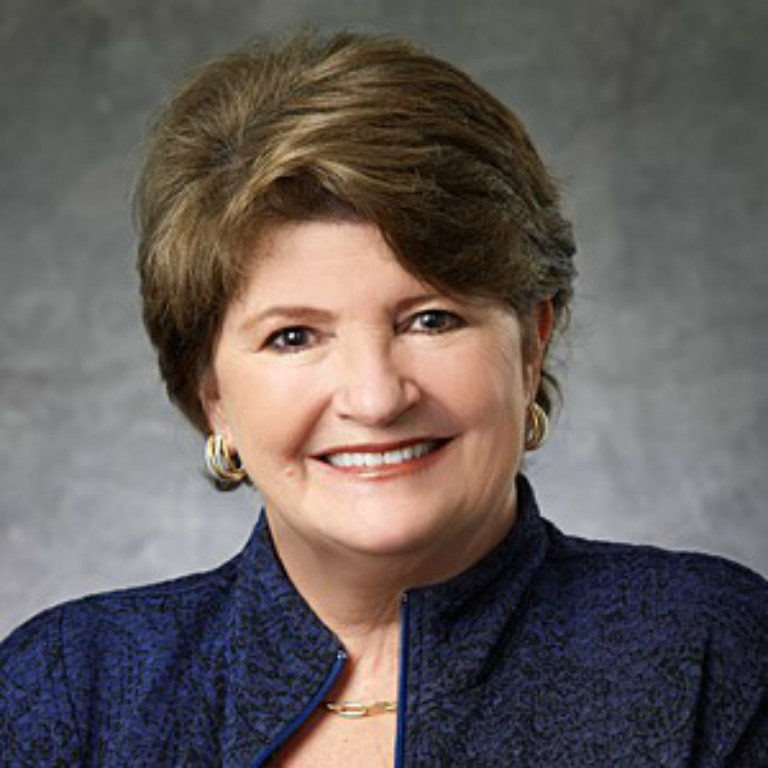
Linda Cutler
Sacramento Region Community Foundation
Question: How are you seeing community organizations adapt to new ways of delivering services right now?
The Sacramento Region Community Foundation is uniquely positioned to respond to local emergencies. The Foundation has always enabled philanthropists to support the issues they care about, but is now taking urgent action to serve area nonprofits in light of the COVID-19 pandemic.
All community-serving organizations in the region are being affected by the COVID-19 pandemic. Some organizations providing services have shifted to doing so remotely, but many others lack this infrastructure. Further, many clients are unable to access these services whether remote or not – between the shelter in place order and the lack of Internet access among many of our most vulnerable community members. Non direct-service organizations are simply looking to stay afloat. In all cases, ongoing communication between nonprofits and their constituents is critical.
To assist nonprofits with service delivery and emergency resources, the Foundation has activated the Sacramento Region Disaster Relief Fund, which has been seeded with an initial investment and grown with the support of fundholders, individual donors, and other regional partners.
Question: What sorts of support are nonprofits asking for in applying for Disaster Relief Funds?
The Sacramento Region Disaster Relief Fund is intended to rapidly deploy funding to address the many challenges that local nonprofits are encountering due to the virus. Because of the focus on swift deployment, we made the application very simple to complete and submit.
We are finding that many applicants need to ensure that staff stay employed, and many others need help in amplifying their service delivery activities and adjusting to new public health mandates and best practices. For example, our funding can help set up remote infrastructure that allows nonprofits to continue their work – funding for Zoom licenses is an example of a request that we’ve received. Among direct service providers, the food banks and their partners across the region are doing a tremendous job of filling that gap. From food delivery directly to seniors to school districts feeding children, so many food system leaders are stepping up to help our most vulnerable right now.
The cancellations of Spring and Summer fundraising events and campaigns is causing a deep disruption in revenue for nonprofits of all types. As such, we are also seeing applicants seek funding simply to stay afloat in this uncertain time.
Question: Looking ahead, what opportunities do you see to strengthen or change our systems?
The COVID-19 pandemic is going to change the way that society operates in the long-term. What is clear is that we need to invest in alternative ways of supporting our most vulnerable and each other.
We are all acting with urgency right now to ensure that basic needs are met, but looking to the future, COVID-19 will reinforce the value of having reserves when challenges like these arise. As part of the Foundation’s capacity-building efforts, we help nonprofits plan for sustainability. In the future, we need to focus on ensuring that there is investment in replenishing or establishing those reserve funds.
The effects of the COVID-19 pandemic are still being understood, but the Foundation is learning from this painful lesson in its work to build a resilient future.
As discussed with Adrian Rehn, Project Leader
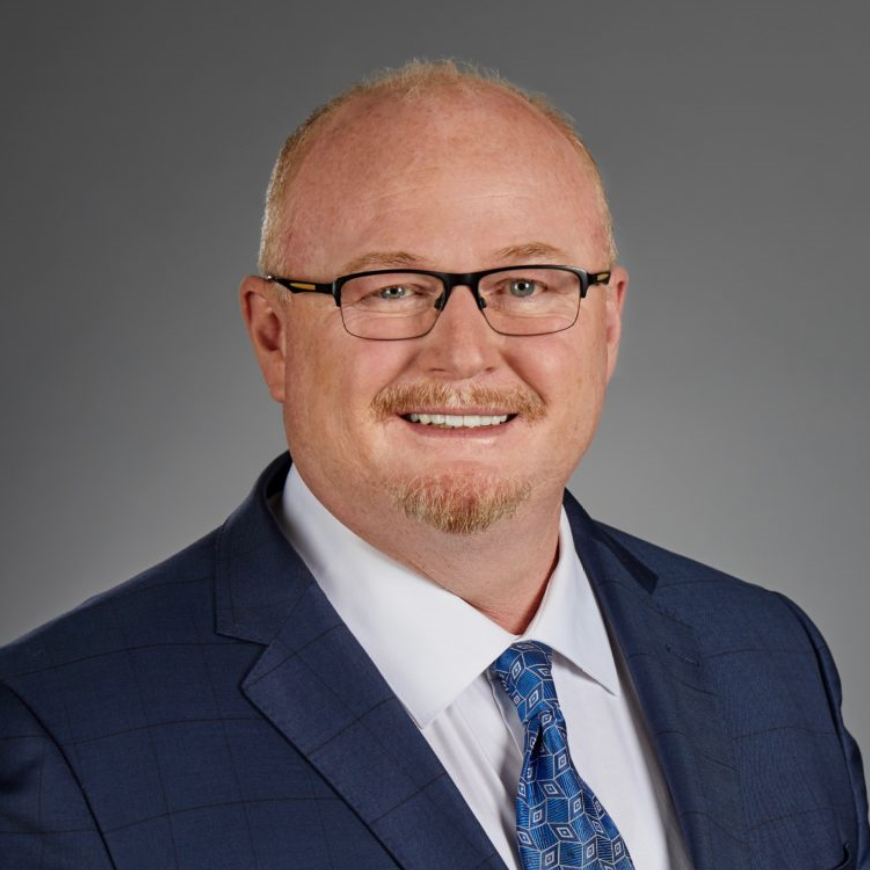
Earnie Franklin
VSP Global
Question: Like others, your firm moved the majority of your workforce to a remote basis really quickly. What are some of the takeaways you’re seeing after the first three weeks of this new way of working?
At VSP Global, we provided our leadership team with tools to manage remotely and our employees with tools to collaborate remotely. We embraced Microsoft Teams as our primary collaboration tool.
During the past few weeks, there are three things I know for sure:
Business Continuity Plans are critical: Having Business Continuity Plans is what enabled us to transition to a remote workforce so quickly. Thankfully, it isn’t often that we get a real-world opportunity to review these plans. Now is the ideal time to critically evaluate and revise them with newfound knowledge.
Creativity is needed: It has been inspiring to see how employees are rising to the challenges our members, doctors, clients, brokers, and partners are facing — just like they always do during crises and natural disasters. In the past two weeks, I’m proud to share that VSP Global has:
- Expanded essential medical eyecare services to 57 million members during the month of April to reduce the impact on hospitals and other medical facilities.
- Extended telehealth functionality to doctors, ensuring VSP patients can receive critical eyecare.
- Begun beta testing telehealth functionality that allows patients to visit with their doctors via their iPhone or Android devices.
Leading with kindness is essential: The situation in which we find ourselves is unusual, and the reactions of those with whom we’re virtually interacting might seem surprising as well. Since emails and texts don’t convey context or emotion, we remind our employees to take a moment to remember their interactions with people before the pandemic. Don’t make assumptions. Ask questions or ask for clarification if something doesn’t seem right.
Above all else, now is the time to be gentle with ourselves and with others. In that vein, we provide lots of resources online like remote fitness challenges and meditation groups to help our employees maintain their physical and mental health.
As COVID-19 has impacted everyone across the globe, we remain focused on ensuring our employees’ safety and well-being while supporting our valued stakeholders.
As discussed with Emma Koefoed, Project Manager

Brian King
Los Rios Community College District
Question: How do educational institutions remain effective in a remote environment – what changes, adaptatations or growth are you seeing and do expect?
It’s amazing how quickly we made the transition. About a month ago, Elk Grove Unified School District reported its first COVID-19 case. By Friday, March 13th, we had suspended all in-person classes, and March 18 was the first day of remote operations.
In less than 2 weeks, we went from recognizing that there was a very serious threat to having everything take place remotely.
An overwhelming number of classes are continuing online, but there is a challenge in getting to that point with some lab classes. In terms of adjustments that have to be made to how classes are graded, those will be determined on a class by class basis.
This experience is really highlighting the digital divide: Some of LRCCD’s most vulnerable students don’t have access to broadband or a computer. We’ve handed out hundreds of Chrome books to many of our students who need them; we’re also helping our students find low cost or free broadband services.
Some of the lessons we’ve learned will have a positive impact. The short timeframe we had to go remote was a catalyst for things to be done.
It’s hard to predict what this will look like moving forward. It will certainly increase our inventory of online courses available for students who need them. Of course, there is no substitute for in-person learning, and that will continue to be the dominant form post COVID-19. Change is always hard, but crisis makes it essential. There are a lot of good lessons we’re learning from doing things remotely, and it will ultimately lead to a better experience when we’re back to doing things face-to-face.
As discussed with Isa Avanceña, Project Associate
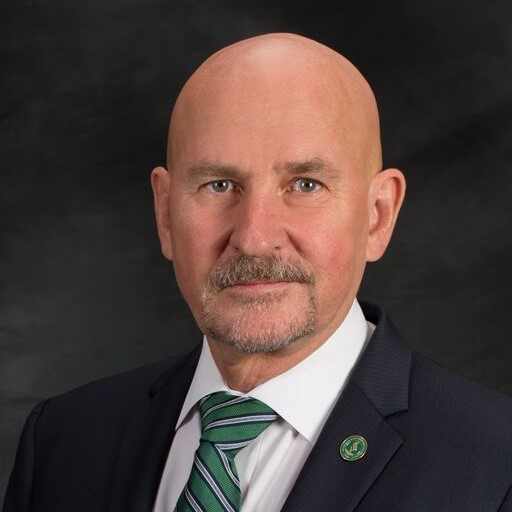
Robert Nelsen
Sacramento State University
Question: Knowing that the country is potentially moving towards a recession – what are your hopes, concerns, and/or advice for your students?
I want my students to know that we may be going into recession but we have been through recessions before and we’ve come out stronger every time. I want them to know that their education will be with them forever and no one can ever take it away from them. It will pay off in their lives. They may not see it right now because it’s tough when they are living paycheck to paycheck or they are worried where that first paycheck is going to come from. Students will have to trust their education just like they have to trust in themselves.
Sacramento State has helpful resources and services for current students and alumni that can help them professionally at the campus’ Career Center. All students are automatically a life member of the Alumni Association with no membership charge. This is a great network opportunity because the Alumni Association’s career services is designed to pair each alumna with mentors who are from their professional industry. They can help alumni connect to the right employers, help them prepare for jobs, and know what to expect in their field of interest. Alumni are encouraged to take advantage of this opportunity as much as they can. For more information to become a member of the Alumni Association to access this service, Sacramento State alumni can visit our website.
Overall, I am always worried about my students’ mental health as these are stressful times and the stress is not good. We have counseling available right now for current students who need it. They can visit a counselor in person on campus at The WELL or schedule an appointment for online counseling. The faculty is always there to support them with ongoing advising. Even though the pandemic is preventing many of us to be off campus, students still have access to services and resources. We have become a virtual university but that does not change our continued services to provide accessible resources to our students.
As discussed with Houa Vang, Project Associate
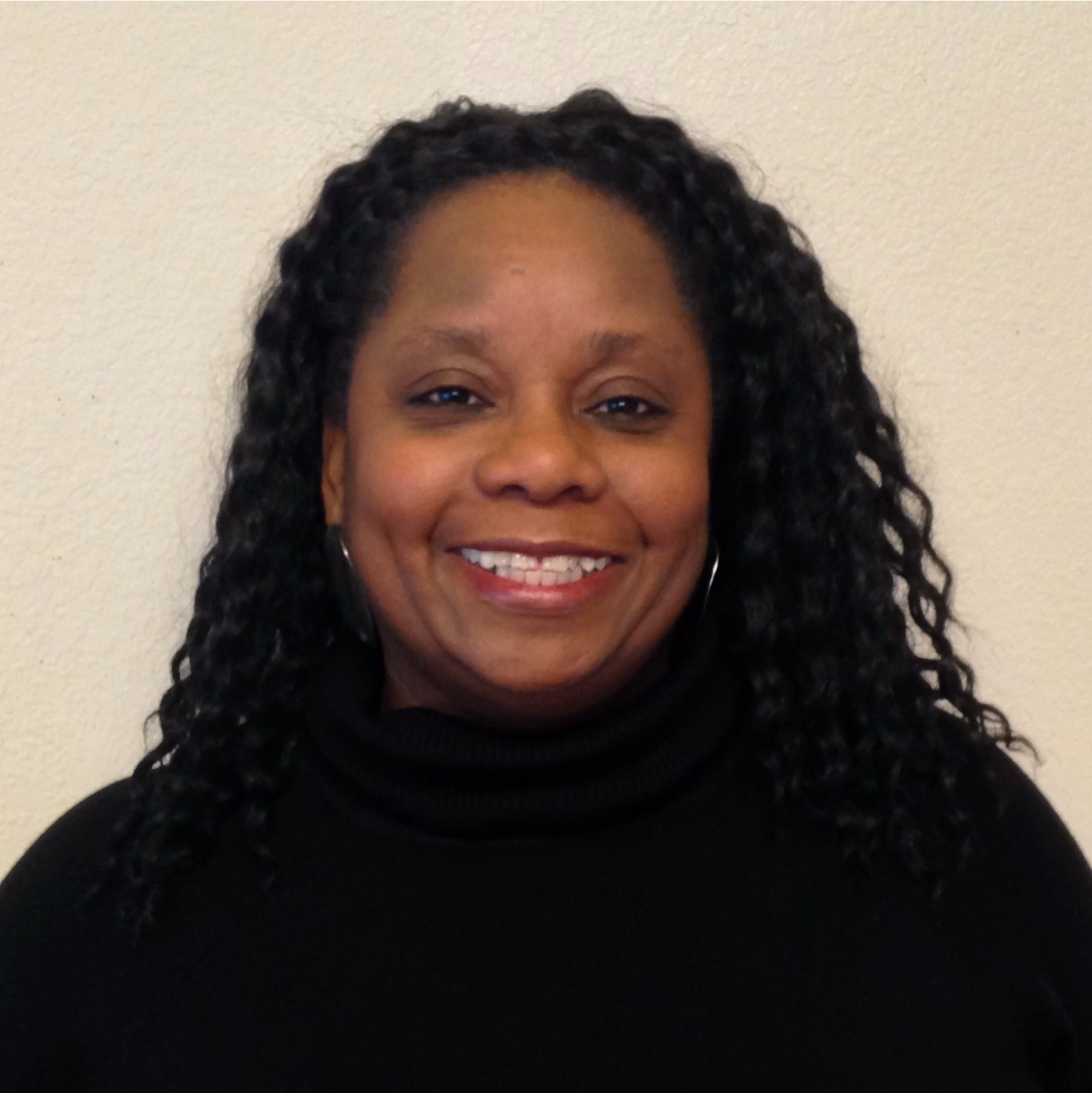
Tina Roberts
Roberts Family Development Center
Question: How are you seeing community organizations adapt to new ways of delivering services right now?
Community organizations are being incredibly inventive after dealing with the initial shock and disruption of most of their services. Roberts Family Development has shifted to primarily remote work in supporting families and children while taking on new roles needed in the current crisis including delivering meals to families. Many nonprofits are affected financially, not having large cash reserves to weather immediate changes in project funding. They are talking with their grantors, looking to revise scopes of work and applying for assistance through the Payroll Protection Program or Disaster Loan Assistance.
Community organizations are utilizing Zoom and online platforms to engage their community members. When services are provided onsite, staff have been retrained to practice social distancing and wear protective equipment which is very different from the high touch forms of engagement they are used to. Community organizations are also responding to the need to provide additional support to our teams including mental health check ins, acknowledging the drastic difference in service delivery brings challenges and frustrations. Overall nonprofits like Roberts Family Development are looking to serve the community as best we can during this public health crisis and sustain a solid structure to enable us to resume services as quickly as possible when allowable.
As discussed with Renee John, Project Leader
Learn more about Valley Vision’s 29-member Board of Directors.
How COVID-19 is Reshaping the Region’s Housing Crisis
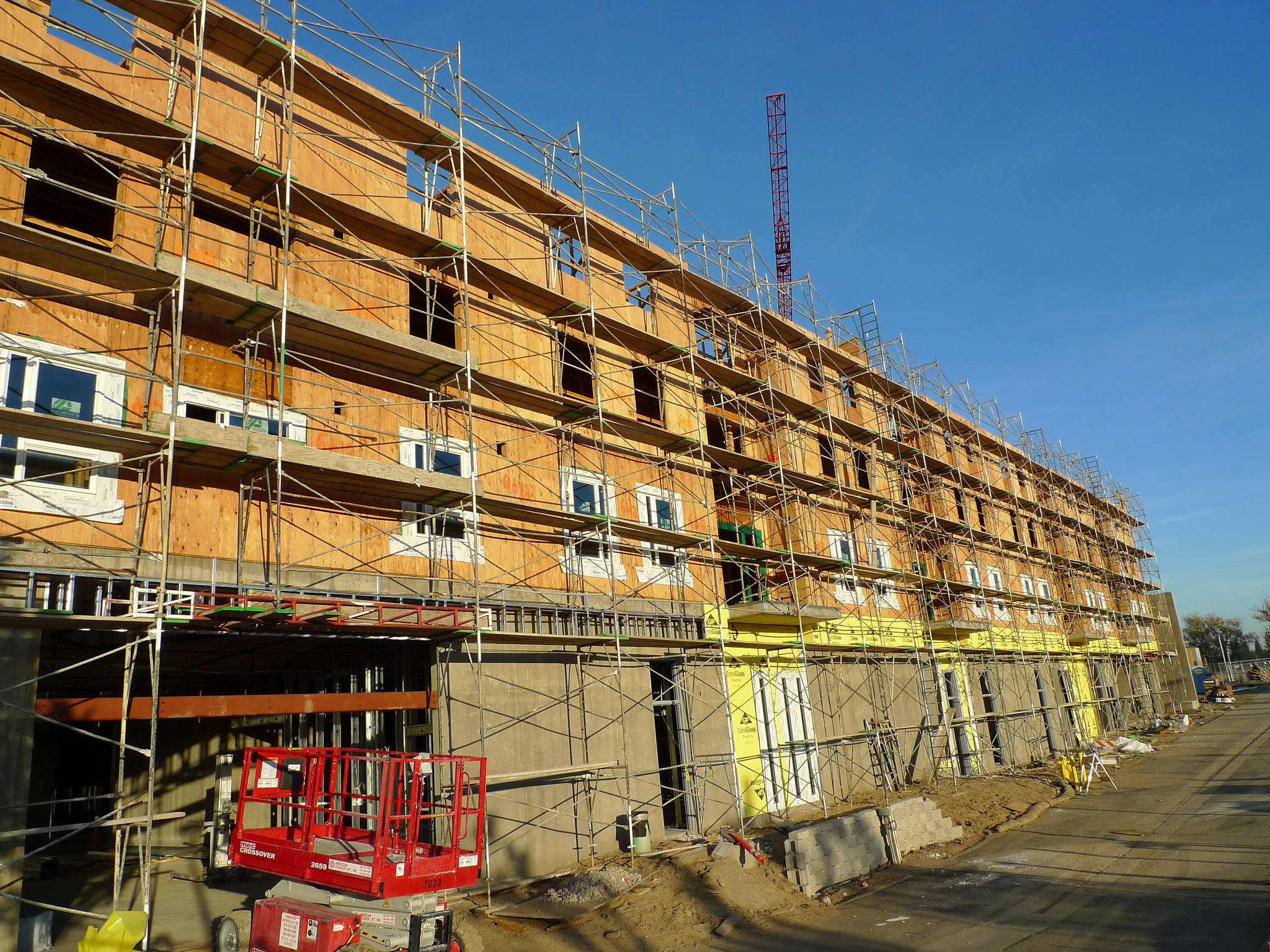
The severity of California’s housing crisis is well-documented, as is its impact on the state’s economic development and livability. The lack of housing supply, coupled with the resulting detriment to quality of life, is a consistent and pressing threat that the region has faced in the last decade. The COVID-19 pandemic exacerbates this problem, and adds a new sense of urgency to the ongoing struggle of ensuring that every person has access to this most basic need.
From a housing crisis perspective, there are two things to consider. First, there is the immediate fallout: How can homeless individuals protect themselves without ready access to shelter and sanitation? How can people self-isolate if their living situation is an overcrowded apartment?
Then, of course, there are the medium and longer-term implications. In the economic recession that is likely to follow — one that many experts predict will be even worse than the 2008 downturn — will California be able to meet its goal of 180,000 new homes each year? Even before the pandemic, the state was falling far short of this, only averaging about 80,000 a year, according to the California Department of Housing and Community Development (HCD).
The Immediate Fallout
On March 18th, Governor Newsom, signed an Executive Order that released emergency funding and granted local flexibility on spending and building shelters. “People experiencing homelessness are among the most vulnerable to the spread of COVID-19,” he said. “California is deploying massive resources to get these vulnerable residents safely into shelter, removing regulatory barriers and securing trailers and hotels to provide immediate housing options.” On April 3rd, he announced that nearly 900 homeless Californians had been placed into hotels and motels. While this swiftness of action is admirable, there is still much work to be done to address the needs of most of the homeless population in California.
It’s not just the homeless population whose increased susceptibility to COVID-19 is a direct result of the state’s housing crisis. California has the country’s highest rate of crowding within its renter-occupied housing units, the result of low housing supply and high costs. Those living in overcrowded households are simply unable to comply with many of the Center for Disease Control’s recommendations, such as self-isolation, which says that individuals showing symptoms should separate themselves from other members of their household “by staying in a specific ‘sick’ bedroom or space and using a different bathroom (if possible).”
A State of Emergency in California was declared on March 4th. The shelter-in-place orders that followed across numerous counties and cities meant that many businesses were forced to temporarily close their doors or scale back operations could no longer pay their employees’ wages. Approximately 1.6 million people statewide have filed unemployment claims since March 13. Individuals who are unable to make rent payments face the threat of eviction, especially in California, where more than 3 million households — a majority of renters — pay more than 30 percent of their income toward rent, and more than 1.5 million households pay more than 50 percent toward their rent. To address this, Governor Newsom issued an Executive Order declaring a moratorium on evictions. The moratorium only applies, however, if the tenant can prove that their inability to make rent is due to reasons related to COVID-19, such as a loss or reduction of income from reduced hours or being laid off. Under this moratorium, evictions not covered by its grounds can still be carried out, and there are concerns among tenant advocates that the wording of the Executive Order makes its protections unclear and insufficient. California’s courts have taken it a step further: the Judicial Council suspended eviction and foreclosure proceedings statewide until 90 days after the COVID-19 State of Emergency is lifted.

Medium and Longer-Term Implications
When the dust settles from the worst weeks of the pandemic, the economic recession that follows will impact housing policy and priorities, although what that looks like remains to be seen.
On the one hand, the urgency of the COVID-19 response could create some momentum for more aggressive and effective housing action in the medium and long-term. On the other hand, the economic fallout and anticipated recession could slow construction, stalling efforts to increase supply and further driving up costs. If that’s the case, those already suffering the most from housing unaffordability will become even more cost-burdened.
One takeaway from the last recession is that, when the economy begins to recover, housing construction and funding for low-income housing programs cannot be left behind. If this is the case, the result is “the housing crisis we were living in before COVID-19 hit: sky-high rents, declining homeownership, widespread gentrification and displacement and rising homelessness.”
There are lessons to be learned in every crisis. In the housing space, the COVID-19 pandemic highlights the need for action informed by data. An inaccurate homelessness count makes it difficult to put together an adequate plan of action in an emergency situation. There’s also no consensus on exactly how many new housing units are needed statewide to address the supply gap, and conflicting assertions can muddle a strategy for how to most efficiently and appropriately use resources, especially in a recession. The HCD — responsible for determining the regional housing needs assessment for each region — estimates that approximately 1.8 million new housing units are needed by 2025, taking into account projected population and household growth. However, other analyses from organizations such as the Embarcadero Institute and the McKinsey Global Institute have noted a range of 1.5 million to 3.5 million new housing units.
Housing the people of California must remain a high priority throughout this health crisis. This pandemic is a reminder of how closely housing and healthcare are intertwined, and that the latter cannot exist when the former is not accessible and affordable.
Isa Avanceña is a Valley Vision Project Associate supporting the Board of Directors, and the Innovation & Infrastructure and Leadership and Civic Engagement Impact areas.
Study Shows Sacramento Workforce Before Coronavirus – and Challenges Ahead
Valley Vision in the Time of COVID-19

Like so many in the Capital Region and around our nation and world, the Valley Vision team is making the necessary changes and working diligently to respond to the rapidly-shifting COVID-19 situation. Our fundamental purpose as an organization is to help make our communities the most livable in the nation. That has been the case since our inception 25+ years ago, and it will remain unchanged in this current situation.
Staying true to our purpose, we are pivoting and adapting our existing work in a host of ways, to best serve and support the region, and will continue to do so as the next weeks unfold.
- In our Food and Ag work, Valley Vision works to create healthy food systems in the region. On Friday this week, we’re launching a brand-new weekly webinar focused on the food and agriculture sectors’ wide range of responses and impacts of COVID-19.
- In Innovation and Infrastructure, Valley Vision has long played a leadership role in efforts to improve access to broadband – the importance of which has been greatly magnified in the context of COVID-19. Our broadband team is in close contact with State leadership, where we’ve provided our existing maps of regional broadband network coverage.
- Our 21st Century Workforce efforts support a talent pipeline for our region. Right now, we’re creating a virtual regional convening to assess how Information and Communication Technology can best support business continuity during this time.
- In our Clean Economy work, we’re active in the Capital Region Climate Readiness Collaborative (CRC), with its quarterly (virtual) workshop recently shifted to focus on how the economic impacts of COVID-19 will affect climate change adaptation actions and resources.
- We are also supporting the capacity of others to respond, as a fiscal sponsor to select efforts, including the regional World Economic Forum Global Shapers chapter, which is stepping up to provide handwashing stations outside local grocery stores and for homeless populations.
In the midst of our work, we’re also taking time to respect that we are all also people with complete lives, and each of us only human. We’re acknowledging that the degree of change, of uncertainty, and of worry in all of our lives is unprecedented, and we’re doubling-down on the need to treat ourselves, each other, and all those with whom we work with patience, kindness, and care.
Practicing this, our staff is checking in face-to-face by Zoom every morning to stay in touch in a time when we might feel disconnected or isolated. Commiserating and laughing together as we all blend home life with work life has been helpful. We’re sharing articles that hit home for each of us, such as this from the Harvard Business Review, or this about how to hold a great virtual meeting; we’re sharing fun things to do, such as virtual trivia competitions, Monterey Bay Aquarium livecams, and watching penguins wander through a museum.
Be well, be safe, and we will carry on through this together.
Meg Arnold is Interim CEO of Valley Vision.
One-Third of Sacramentans Depend on the Gig Economy, Recent Poll Finds
An Integrated Approach to Innovation

On January 22, 2020, The City of Woodland, along with partners representing Food and Ag innovation, including Valley Vision, University of Agriculture and Natural Resources (UCANR), Greater Sacramento Economic Council (GSEC) and UC Davis, presented its second Ag Innovation Forum – Ag, Food & Health: An Integrated Approach to Innovation. This event highlighted Woodland, and the Greater Sacramento Region’s, critical role in integrating food and Ag entrepreneurship, industry, academia, and policy for a healthy and sustainable future.
The discussion focused on the Region’s opportunity to align and mobilize its world-class assets to build a state-of-the-art Research & Technology Park. The planned site will become an epicenter for research, as well as a Global Ag, Food & Health Center – a proposed public-private partnership integrating science and technology innovation for agriculture, food, and health, similar to proven models in Texas, New York, Germany, and the Netherlands.
Situated close to the University of California Davis and complementary to the planned Aggie Square development in Sacramento, Woodland is recognized for its agricultural innovation, food and plant science, food processing, as well as its investments in startup ecosystems. Its unique geographical location has made Woodland the perfect candidate for this endeavor. Secretary Karen Ross spoke to the importance of Woodland and its agricultural assets and contributions to the state’s economy. With the effects of climate change becoming more prevalent, especially in agriculture, innovation for our regional food and farming industries is critical.
The Secretary, and Lenny Mendonca, Chief Economic and Business Advisor at the State of California, both agreed that adaptation and investing in resiliency across agricultural production to adjust these major disruptors (i.e. floods, droughts, fires), is imperative. They also affirmed that research and development in new technologies that enable farmers can address these changes must be a top state priority. Furthermore, aligning the Region’s industry goals will allow the right capital and the right people the chance to work together to lead us on the path to “durable, equitable, profitable solutions.”
A moderated panel discussion led by Lon Hatamiya, The Hatamiya Group, continued the discussion with leaders supporting initiatives for our food and agricultural industries. Santana Diaz, Executive Chef, UC Davis Health, Trish Kelly, Managing Director, Valley Vision, Gabriel Youtsey, University of California Ag and Natural Resources, and Adam Englehardt, Englehardt Agricultural Services, and Tim Schaedler, Panattoni Development, all echoed the importance of expanding region’s innovation ecosystem through investments like the Woodland Research Technology Park, institutional procurement, and comprehensive financing programs, to uplift our regional food and ag economy.

Extending the Table

On February 24th, WomenUp Network, Uptown Studios, and Slow Food Sacramento hosted “Extending the Table” a discussion with local women leaders in the farm-to-fork movement. These inspiring women spoke on the exciting developments in the local food scene, their careers, challenges they had faced and shared advice on what it is like to lead a woman in this industry. Jodie Chavious, Slow Food Board Member, Charmaine Magale, Legado Spirits, Gerine Williams, Neighborworks/Oak Park Farmers Market, and Rachel Wallace, Echo and Rig, all participated in the wildly exciting and informative discussion. Tina Reynolds, from Uptown Studios, moderated the discussion.
The evening kicked off at Uptown Studios, with a wonderful spread of local foods prepared by Brenda Ruiz and Jodie Chavious, Chefs and Slow Food board members. Citrus shrimp ceviche, braised meatballs, fresh rye bread from Faria Bakery, cheese, and charcuterie, KC Kombucha, and other cocktails from Drinks by Dru were all on the menu. Truly delicious.
The panel discussion, lead by Renyolds, focused on the highlights and challenges these women faced as they journeyed through their careers. Each speaker addressing how she had chosen to balance or blow past the barriers placed in front of them.
In September 2018, Charmaine Mageale and her partners founded Legado Sprits, a “ bold new American whiskey crafted to deliver incredible flavor, developed by the female palate.” Magale revealed that many times she found her passion, knowledge, and business partners being questioned simply for not being “white, a man, and old.” But she refused to be deterred from the nay-sayers and skeptics, setting aside society’s expectations of a whiskey connoisseur, and instead became obsessed with creating a phenomenal product.
Touching on her life-long experiences as a chef, Jodie Charious came up the ranks, rather unscathed by many of the stories we see across headlines today, but very aware of the existence of unfair and sexist practices. Charious noted, “I was very fortunate” but her career did not come without struggle, admitting “Today, I don’t have any shame in asking for help, reaching for something on the top shelf, cutting through a bone of animal I’m breaking down.” The need for thick skin in this industry is imperative; being emotionally tough is a basic requirement, but with the leadership from chefs like Chef Charious, culinary communities are stepping into a new era.
Gerine Williams, spoke to the trends of Sacramento’s food and culinary community and the importance of supporting new, small, and entrepreneurial business. She emphasized that smaller producers need to be empowered to get their businesses off the ground. For too long, “the same people seem to get the same shot, over and over.” The result, the same business owners, the same style of foods, and the same price points, continue to pop up. This means communities lose out on having a diverse range of options. Williams followed up asking “How many places in Sacramento can you get a Fried Chicken Sandwich? Let’s get real”. Putting her words into action, Williams tries her best to provide opportunities through the Oak Park farmers market and in her personal life – going as far as purchasing food from smaller homemakers off Facebook Marketplace as a way to support entrepreneurs in her community.
After being pushed into a pastry position early in her career, like many women in the culinary space, Rachel Wallace dedicated herself to breaking through that traditional position where women often find themselves. “It’s typical to place women in Pastry, which isn’t a bad thing. There are some badass women pastry chefs out there” but it’s not where she saw herself staying. Wallace was determined to break out of that space and prove her skills as a chef. Today Wallace is the Chef de Cuisine at Echo and Rig, working alongside a team that promotes and advocates for a healthy workspace for everyone. “Be confident, own your space, and don’t let people say you don’t belong” were some of the characteristics she believes are imperative for women if they are going to enter the culinary workforce.
This event was supported by Slow Food Sacramento, WomenUp Network, Uptown Studios, SMUD, Tri-Counties Bank, Rani Pettis, Charles Vincent McDonald Photography, Crooked Lane Brewery, Drinks By Dru, Faria bakery, GoldLineBrands, Haarmeyer Estates, KC Kombucha, Legado spirits, Macy’s, Real Pie Company, Revolutions Wine, and Sacramento Natural Food Co-Op.
Valley Vision continues to support Farm to Fork efforts, and work being done to uplift the Sacramento Region’s namesake as America’s Farm to Fork Capital. We are excited to see events like “Extending the Table” taking place and being well-attended and supported by local businesses.
Subscribe to Valley Vision’s Food For Thought Newsletter to learn more about Food and Ag events and stay up to date about other work happening in our region!
Valley Vision Leaders Win Half of the Metro Chamber Annual Awards This Year

In a show of regional unity and strength, four of the eight major achievements handed out by the Sacramento Metro Chamber at its 125th Annual Dinner in January went to people who have been part of Valley Vision’s leadership in recent years.
Trish Rodriguez was recognized as Businesswoman of the Year for her passion in delivering high quality healthcare as Kaiser Permanente’s senior vice president and area manager, and her engagement in many community organizations and change efforts. She is on Valley Vision’s executive committee and will be Chairwoman in 2022.
James Beckwith was recognized as Businessman of the Year for the success at Five Star Bank as its long-time CEO, his volunteer leadership roles with various nonprofits, including serving as Chairman of the Board for Valley Vision, and the local banks’ generosity in philanthropic causes that build wealth and create opportunity.
This year the small business of the year award went to the boutique creative agency Honey, led by Valley Vision board member Meghan Phillips, who is a driving force helping nonprofits grow stronger and is one of the region’s biggest promoters our farm-to-table heritage.

Bill Mueller won the Peter McCuen Award for Civic Entrepreneurs for the economic, social, and environmental change efforts he championed with others and sometimes led while Valley Vision’s CEO over the past decade.
“We are so proud of each of these leaders and how each of them, in their own way, continue to collaborate with others to build a better future for our communities, especially those most in need,” said Meg Arnold, Valley Vision’s Interim CEO. “We were thrilled to have our volunteer and executive leadership so well represented this year.” To learn more about the awards, visit www.metrochamber.org.
Photo Credit: Tia Gemmell
Stepping In

At the beginning of this month, I moved into the role of Interim CEO for Valley Vision, as the inestimable Bill Mueller moved on. It’s an honor and a pleasure to serve in this capacity for the period of time until the next permanent CEO of the organization is identified by our Board of Directors – and it’s also been a relatively easy transition, for four important reasons.
Most significantly, because of the Valley Vision team, all of whom show up every day with focus, energy, integrity, compassion, and great teamwork, delivering on our purpose of helping our communities become the most livable in the nation.
Equally importantly, because of the support and confidence of the regional leaders on the Valley Vision Board, who represent both themselves and the organizations that they lead, and provide guidance, strategic direction, and oversight to our work.
Also, because I’m fortunate that Valley Vision is so familiar to me. I’ve worked with, or around, or for Valley Vision since 2005, beginning back in my days at the UC Davis Office of Research, to my first consulting stint here in 2009 managing Valley Vision’s Green Capital Alliance work, through my tenure as CEO at SARTA as a co-lead on the Next Economy project, and finally to my last five years as a consultant here primarily focused on our Clean Economy work.
And, of course, because Bill was just as thoughtful and thorough as you’d expect him to be, in the way that he managed his transition out after twelve years of leadership and fifteen years overall at Valley Vision. He prepared the ground well, and I’m benefiting from his advance work.
In closing, I want to share the best advice I’ve received from the Board thus far, which was “don’t act like an interim.” That seems an important commitment to make out loud: I will not act like an interim for the time that I’m here. You’ll see Valley Vision continue in all that we do – focusing on livable, inclusive, and resilient communities, engaging with our many partners across the region, and moving ahead with our entire range of work – so that my own hand-off to the new Valley Vision CEO will be as well-executed as was Bill’s hand-off to me.
Meg Arnold is Interim CEO of Valley Vision.
Continued Investment in College Facilities Urged by Valley Vision Board

Valley Vision’s 30-member Board of Directors urged support for Measure E on the March 3rd ballot which, if approved by 55% of voters, will authorize $650 million in funds to repair and upgrade classrooms, labs, and other educational facilities throughout the Los Rios Community College District.
“After the Board considered the demands for continued investment for higher education, the safeguards the measure has in place, and the importance of having labs and proper classrooms for the type of job training and workforce preparation we need in the Sacramento area, the vote was unanimous,” reported Trish Rodriguez of Kaiser Permanente, Vice Chairwoman of the Board who led the discussion.
Los Rios Community College District is the region’s largest and most important provider of job training to adults of all ages. However, the District Board believes that state funding is not enough to maintain and improve these facilities. Measure E provides these funds to improve classrooms and labs at four college campuses and their support facilities, benefiting more than 70,000 students per year.
“This is a no-tax-increase bond measure,” said Valley Vision CEO Bill Mueller when presenting the issue to the board, adding it faces no organized opposition. “Measure E has been designed to maintain current tax rates and could only be used for facility expenditures. A citizens’ oversight committee and annual audits would ensure funds are spent as promised.”
Incoming Interim CEO Meg Arnold underscored the importance of the bond issue to the achievement of initiatives Valley Vision is undertaking to prepare a 21st century workforce. And Garry Maisel, CEO of Western Health Advantage, said that the bond would also advance the region’s push for the California Mobility Center, a global center for new clean technologies that will train and employ local residents in new facilities.
Valley Vision’s purpose is to advance a more prosperous, just and sustainable region and state. To learn more about the bond, please visit www.losrios.edu/measure-e.
Bill Mueller was Valley Vision’s Chief Executive through January 31st, 2020.
Newsom and First Partner to Support Farm to School Programs

Governor Newsom has proposed a $600 million dollar budget that includes funding support for initiatives that will enhance student nutrition and school meal programs.
First Partner Jennifer Siebel Newsom, who has been engaged in supporting Farm to School programs, will be championing these efforts. Most recently, Ms. Siebel Newsom, with coordination from CDFA, Valley Vision, Woodland Community College, and other partners, toured Farm to School Programs in Yolo County and Career programs hosted at Woodland Community College. The purpose of the visit to Woodland Community College was intended to show the connection between eating locally grown healthy foods at school and the potential for opportunities in food and ag career pathways
Late last year, Mrs. Siebel Newsom toured Yolo County and other areas to learn more about the thriving Farm to School programs led by the California Department of Food and Agriculture (CDFA) and Secretary Karen Ross, and food and ag career education programs. Nick Anicich, Farm to School Program Lead, CDFA Office of Farm to Fork, Valley Vision’s Managing Director Trish Kelly, and Carrie Peterson, Regional Director, Agriculture, Water, and Environmental Technology, coordinated the First Partner’s visit to Woodland Community College. This was an opportunity to showcase how food and ag career education programs are providing pathways for local students in this important regional industry, building on Farm to School programs in K-2. Faculty, Students, and College District Leaders hosted the First Partner as she toured the Greenhouse and other facilities, discussing programs and topics like Ag-tech, regenerative agriculture, and growing healthy foods. Valley Vision supports these career pathway efforts as part of the Community College’s Strong Workforce Programs.
Photo top: Jennifer Siebel Newsom tours Greenhouse at Woodland Community College (WCC)

Photo above: Yuba Community College District Chancellor and Board of Trustees, Woodland Community College President, and Faculty, Valley Vision, and California Department of Food and Agriculture, with First Partner.
Regional Broadband Consortia Powers up for Three More Years

In November 2019, Valley Vision was awarded funding to manage the Connected Capital Area Broadband Consortia (CCABC) for the next three years, working alongside other regional consortia to achieve 98% broadband access within each region – its third grant from the California Public Utilities Commission (CPUC) since 2012.
The CCABC is tasked to facilitate the deployment of broadband infrastructure throughout the four-county CCABC region (Sacramento, Sutter, Yolo, and Yuba counties), working with local municipalities, Internet service providers (ISPs), anchor institutions, community partners, and the State, among others to close the Digital Divide and improve access for the next three years. In this new phase of funding, the CCABC plans to use a reverse RFP approach, which will place a thorough case for investment in the hands of providers. The intent is to generate a more active response from providers by fulfilling as much of the planning work as possible and promoting competition.
Although there was a hiatus in CPUC funding in 2019 for most regional consortia, the CCABC was able to engage multiple stakeholders through several initiatives to improve broadband access, adoption and deployment. In February 2019, Valley Vision helped host a Digital Inclusion Summit, alongside the Sacramento Public Library and the City of Sacramento’s Office of Innovation and Economic Development, bringing together more than 100 participants, to facilitate collaboration among organizations and initiatives working to bridge the digital divide. This summit led to the development of the Sacramento Coalition for Digital Inclusion and the Digital Inclusion Week resolution passed in the City of Sacramento. In March 2019, Valley Vision hosted FCC Chairman, Ajit Pai, to discuss rural broadband infrastructure and connectivity issues related to lack of eligibility for federal funding due to rural definitions, among other challenges. Chairman Pai visited two farms which are piloting ag technologies and the AgStart incubator in Woodland, and met with local and state policy leaders. The CCABC continues to work with the Chairman’s office and other Commissioners to address funding, mapping and other infrastructure challenges, along with federal agencies including NTIA, EDA and USDA and congressional representatives to advance regional broadband priorities. This work will continue as part of the 2020 Cap-to-Cap trip in April.
Through funding from the Delta Protection Commission, Valley Vision developed a broadband action plan for five legacy communities along the Sacramento–San Joaquin River Delta, all facing rural broadband infrastructure and funding challenges. As a lead partner in developing the Capital Region Comprehensive Economic Development Strategy (CEDS), with support from the U.S. Economic Development Administration, Valley Vision incorporated broadband infrastructure and access priorities into both the infrastructure and workforce/digital skills strategies. Additionally, with support from the California Emerging Technology Fund (CETF), Valley Vision manages the Strategic Broadband Corridors Project, a statewide effort to coordinate the network of broadband consortia with CalTrans to conduct joint use/dig once projects along priority corridors/highways.

To get updates on the Connected Capital Area Broadband Consortium and the Sacramento Coalition for Digital Inclusion, subscribe to our broadband newsletter today!
Yzabelle Dela Cruz is a Valley Vision Project Associate contributing to the Innovation & Infrastructure and 21st Century Workforce impact areas.
Valley Vision’s Trish Kelly also contributed to the writing of this blog.